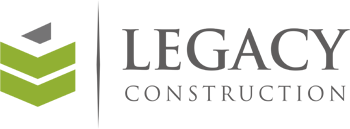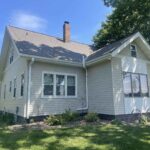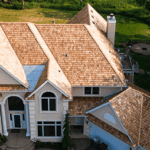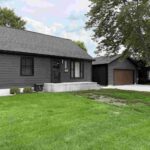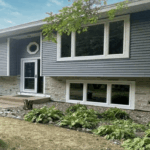If you’ve lived through a Minnesota winter, you know how important a well-insulated home is. When temperatures dip below zero, quality insulation keeps your home comfortable and energy-efficient — lowering utility bills and protecting against long-term heat loss and moisture damage.
Unfortunately, many Twin Cities homes, especially older ones, don’t have enough insulation. Knowing the signs of under-insulation can help you act before you waste more energy or risk issues like ice dams and drafty rooms.
Why Insulation Matters in Minnesota
Minnesota’s climate is tough on homes. Between freezing winters, humid summers, and constant freeze-thaw cycles, insulation plays a crucial role in keeping your home’s temperature consistent year-round.
A properly insulated home helps by:
- Keeping heat inside during the winter and preventing it from escaping through the attic or walls.
- Reducing energy costs, since your furnace or air conditioner doesn’t have to work as hard.
- Preventing ice dams, which form when heat escaping from the attic melts snow on the roof.
- Improving indoor comfort, eliminating cold spots, drafts, and temperature fluctuations.
- Protecting your roof and attic by maintaining steady temperatures that reduce condensation and moisture buildup.
Without proper insulation, your home’s HVAC system works overtime, your energy bills climb, and your comfort level drops.
Common Signs Your Home May Be Under-Insulated
If your home always feels chilly in the winter or struggles to stay cool in the summer, it might be time to take a closer look at your insulation. Here are some telltale signs:
Uneven Temperatures Between Rooms
If some rooms feel colder or warmer than others, especially those above garages or on upper floors, it could mean your insulation isn’t doing its job evenly throughout the home.
Drafts or Cold Walls
Drafts near windows, outlets, or attic hatches suggest air is leaking through under-insulated areas. You can also touch interior walls — if they feel cold in winter or warm in summer, that’s a red flag.
Ice Dams on the Roof
This is a big one in Minnesota. Ice dams form when heat escapes from your attic, melts the snow on your roof, and refreezes along the edges. It’s not just a roofing problem; it’s often a sign of poor attic insulation and ventilation.
High Energy Bills
If your heating or cooling bills are consistently higher than expected, especially compared to similar homes — inadequate insulation could be the culprit.
Frozen Pipes or Condensation in the Attic
Poor insulation can lead to freezing pipes in winter and excess moisture buildup in your attic, both of which can cause costly damage if left unchecked.
Aging or Compressed Insulation
Even if your home was once well-insulated, materials like fiberglass batts can settle or compress over time, losing their effectiveness.
Why It Pays to Have a Professional Insulation Assessment
While you can spot some symptoms yourself, a professional insulation company can perform a home energy audit or thermal imaging test to pinpoint exactly where your home is losing energy.
Professional testing provides:
- Accurate data on insulation levels and air leakage.
- Recommendations on where to add insulation for the biggest improvement.
- Peace of mind knowing your home’s efficiency is properly evaluated.
At Legacy Construction, we often find that homeowners underestimate how much heat loss occurs through the attic and roof — sometimes up to 25% of total energy loss. A professional inspection ensures you’re not investing in the wrong areas and that you’re getting the most value for your insulation upgrade.
The Best Types of Insulation for Minnesota Attics
Not all insulation performs equally in cold climates. For Minnesota homes, attic insulation is especially important, since heat naturally rises. Here are some of the most effective options:
1. Blown-In Cellulose Insulation
- Made from recycled paper fibers treated for fire and pest resistance.
- Excellent at sealing small gaps and irregular spaces.
- Provides strong R-value (thermal resistance) and is ideal for topping off existing insulation.
2. Fiberglass Batt or Blown-In Insulation
- Widely available and cost-effective.
- Resistant to moisture and mold when properly installed.
- Good for attics with even joist spacing or easy access.
3. Spray Foam Insulation
- Expands to fill every crack and gap, creating an air-tight seal.
- Offers the highest R-value per inch of any insulation type.
- Excellent for preventing air leakage and controlling moisture.
- More expensive upfront, but highly effective in cold climates like Minnesota.
4. Rigid Foam Board Insulation
- Commonly used along rooflines or walls.
- Provides excellent moisture resistance and structural support.
- Often combined with other insulation types for maximum performance.
For most Minnesota homes, a combination of blown-in cellulose or fiberglass and air sealing with spray foam around problem areas (like attic hatches, vents, or can lights) offers the best performance for the price.
Need Insulation for Your Home? Our Team Can Help.
At Legacy Construction, we understand that insulation isn’t just a home improvement project; it’s an investment in your comfort, safety, and energy efficiency. As a local, family-owned Twin Cities company, we approach every project with honesty and care.
When you call our team, we’ll:
- Conduct a thorough attic and insulation assessment.
- Identify where your home is losing heat and energy.
- Recommend insulation types that fit your home’s design and budget.
- Handle the installation with attention to detail and quality workmanship.
Under-insulation is one of the most common and overlooked causes of high energy bills and uncomfortable living spaces in Minnesota homes. If you’re noticing drafts, ice dams, or uneven temperatures, your home may not be as insulated as it should be.
Getting a professional insulation assessment is the best first step toward identifying the problem and finding the right solution. With the right insulation, you’ll enjoy a warmer winter, a cooler summer, and lower utility bills all year long.
 (952) 303-4080
(952) 303-4080



